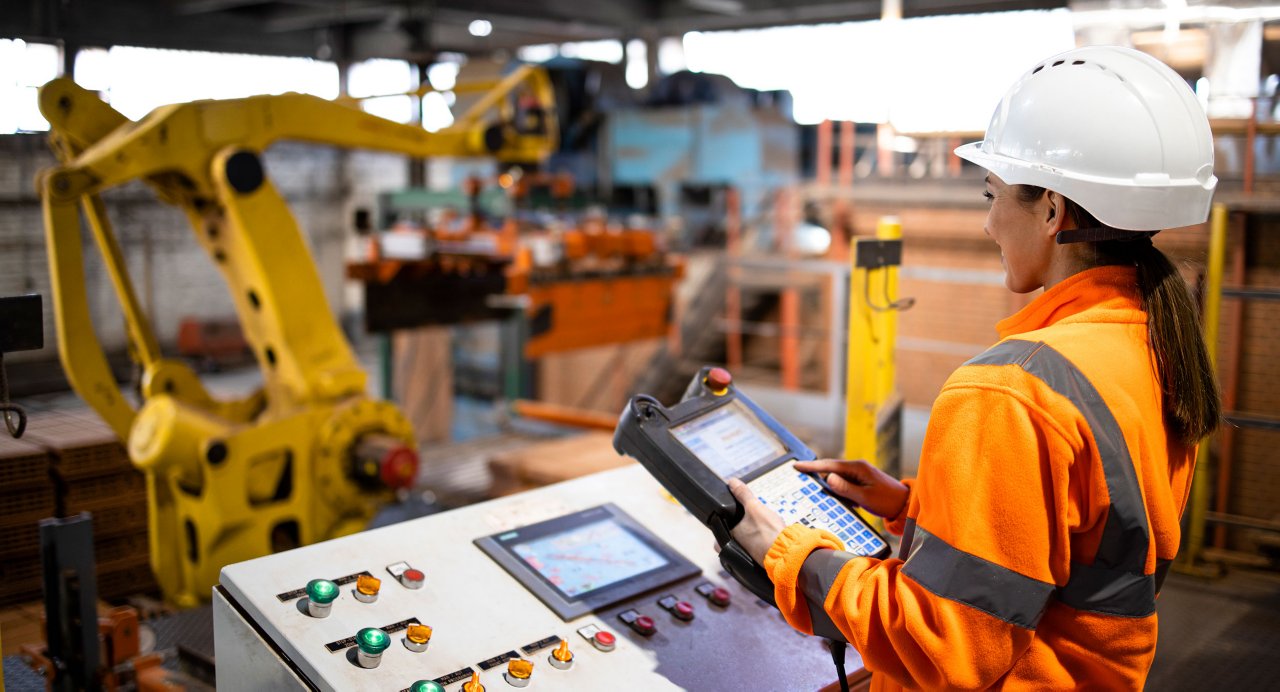Smarter Packaging Machines to Improve Flexibility and Simplicity
How new technologies can help address your customers’ most pressing packaging challenges
Packaging machines today need to address two primary areas for manufacturers.
First, machines need to be designed to take advantage of smart manufacturing to give manufacturers a competitive edge. This means machines are information-enabled, can deliver real-time diagnostics, use contemporary safety technologies, and are easy to integrate.
Smart manufacturing is still being shaped by the emergence of smart devices. Because of this, smart machines must be future-ready, with the capacity to easily scale up with additional connections and expansions.
Second, machines need to be high performing and help manufacturers meet their most pressing business needs to:
• Maximize productivity and efficiencies to remain competitive
• Improve packaging flexibility to accommodate expanded product varieties and more diverse packaging sizes
• Meet the needs of an aging and evolving workforce
This is where smart machines come in as part of the equation that can thrive in the Connected Enterprise where plant and enterprise-level systems converge.
Embracing Smart Machines
Key considerations when designing smart packaging machines for the Connected Enterprise include identifying how you can achieve the desired levels of connectivity and performance.
At the network level: A smart packaging machine should be able to communicate in real time across an IP-based, standard and unmodified Ethernet network infrastructure. EtherNet/IP™ is a proven and complete industrial Ethernet solution. It helps enable a simple network architecture and can handle discrete, continuous process, batch, safety, drive and motion applications.
At the system level: The packaging machine should take advantage of the next-generation Rockwell Automation Integrated Architecture® portfolio. It can reduce complexity, give users easier access to information, and improve responsiveness to changing market demands. Key elements in the Integrated Architecture portfolio include the Studio 5000® software that integrates multiple functions into one development environment.
This can help you speed the development of packaging systems for the Connected Enterprise. The Allen-Bradley® CompactLogix™ 5380 controller provides up to 20% increased application capacity and is ideal for small to midsize applications that require low axis motion and I/O point counts.
For larger applications, the Allen-Bradley ControlLogix® 5580 controller provides up to 45% more application capacity. Both controllers include embedded 1-gigabit Ethernet ports to support the growing demands of smart manufacturing.
Improving Productivity and Efficiency
End users are looking to get the most from their packaging machines. They can do this by connecting machines, sensors and devices, and using intelligent software to improve control. Standardized machine functionality that is combined with standardized information reporting can help drive continuous OEE improvements across multiple sites.
You can use enabling, remote-access technologies and services, such as the Allen-Bradley Stratix® 5700 managed industrial Ethernet switch, which manages secure, remote-access connections on the plant floor. Also, the remote monitoring and analytics service offers a simple and secure approach to monitoring equipment remotely. In addition, several members of the Rockwell Automation PartnerNetwork™ program provide cloud-based and remote-monitoring solutions.
Mobile technology expands traditional HMI system access to let operators be more productive. It can empower manufacturing operators, managers and supervisors to make timely decisions no matter where they are.
More Flexible Packaging Options
Higher SKU counts and more diverse packaging sizes have led to shorter production runs. As a result,
manufacturers need greater machine flexibility and faster changeovers to maximize throughput. Traditional motor solutions that use rotary-driven chains, belts and gears can be rigid, with complex designs and little flexibility.
New machine solutions such as robotics technologies and independent cart technology are better suited for today’s production needs. Our iTRAK® system replaces traditional mechanics with simple and effective software profiles. This can improve speed and flexibility in a diverse range of packaging applications. The MagneMotion® high-performance conveyor systems with servo-controlled, independent cart technology help more safely, quickly and easily transport products and heavy loads between machines and throughout a plant.
Integrating robotic technologies into a packaging system can allow for faster communication of control, safety and process information, and more accurate control of machine movements.
Design Machines for an Evolving Global Workforce
The global manufacturing workforce is in the midst of a massive transition. Skilled worker shortages have emerged as a threat to growth and productivity in multiple regions around the world. To help end users cope with these challenges, packaging machines should be designed for easy use by both newer and experienced workers, while also optimizing worker safety and productivity.
HMI faceplates with systemwide diagnostic functions and easy-to-understand display screens can help workers better detect issues and ease troubleshooting. Embedded help functions and user manuals can also help improve machine familiarity for inexperienced operators.
The Allen-Bradley Kinetix® 5700 servo drive can ease commissioning and maintenance for large machines. It uses Load Observer real-time tuning to lessen the need to tune each individual axis, which can reduce commissioning time by days,
weeks or even months. Tracking Notch Filter technology helps prevent machine failures by detecting and removing resonant frequencies, and automatically making tuning adjustments over time.
Modernize safety
Contemporary safety systems that are integrated with machinery control systems can help reduce safety risks while also improving productivity. These systems are less prone to nuisance shutdowns than hardwired systems. They are also more ergonomic, reducing the probability that workers will override the systems and put themselves at risk.


